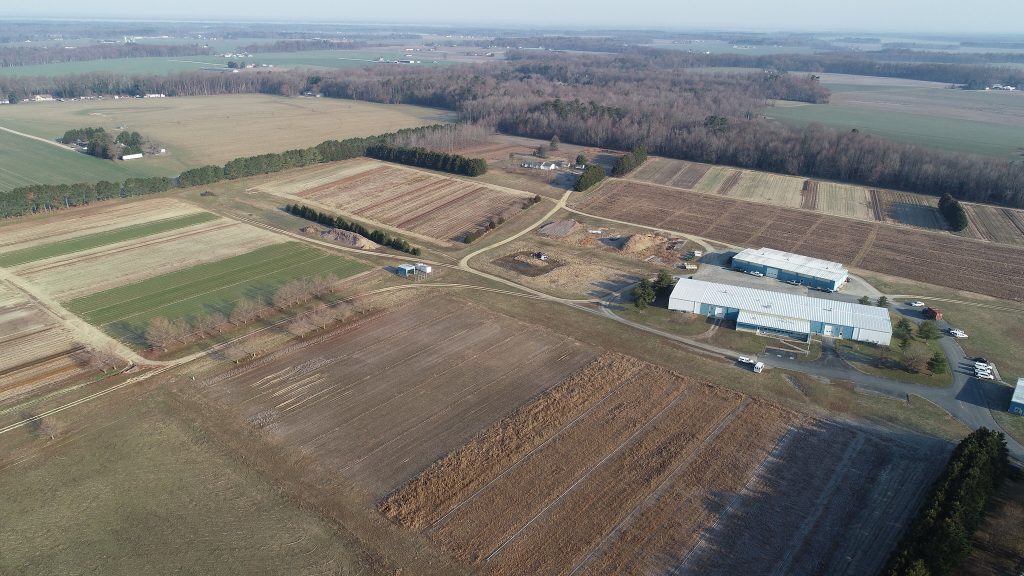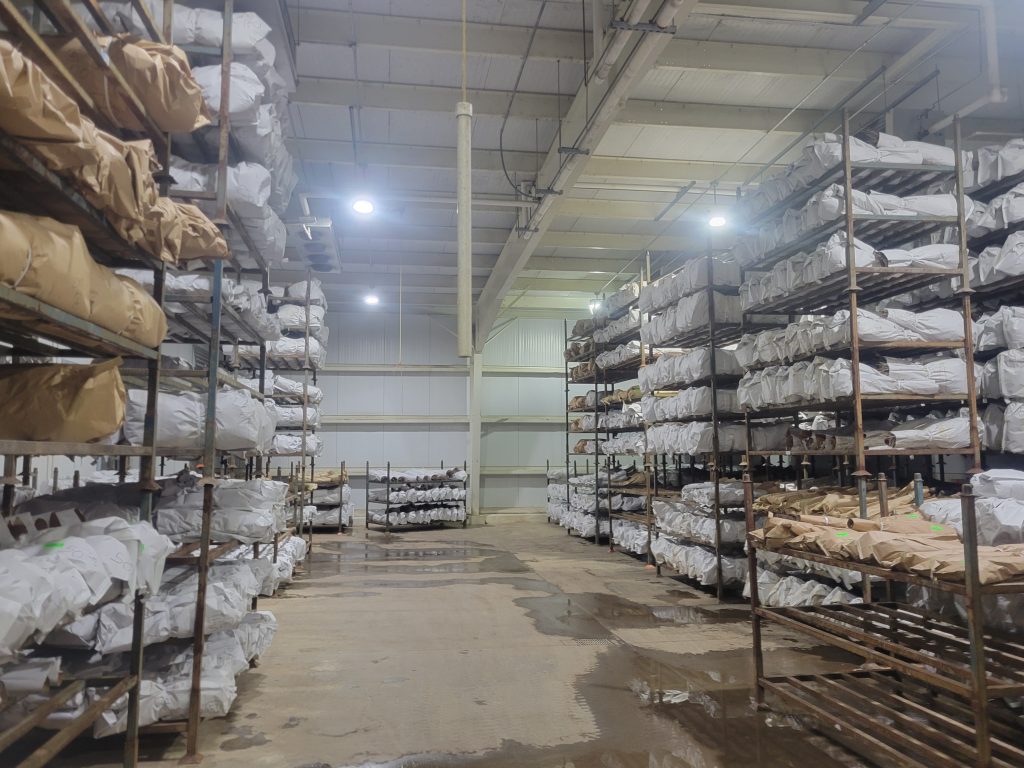The trees planted at the Ayton State Tree Nursery go to reclaimed forests, restoration projects, and anyone who orders a bundle of 25 or more

The state tree nursery in Caroline County. Photo by Steve Badger/DNR
At the John S. Ayton State Tree Nursery, little green saplings progressed down rows of conveyor belts.
On both sides of the line, workers sifted through bread trays stacked with young trees, bundling them and placing them on the belt. At the end of the row, a worker lifted the clump from the creaking machinery and whacked it with a machete to prune off excess roots. Then they bagged the bundle and marked it off: “1,000 loblolly.”
This is just a small step in the production process at the state nursery, part of the Maryland Department of Natural Resources’ Forest Service, which oversees trees from seed to sapling, planting them, growing them, and then shipping them out. Every year, the nursery produces millions of trees. The team there is filling orders for 2.75 million trees this year.
“This is a mad dash,” Richard Garrett, the nursery manager, said at the site during a busy time in late February. “We’re getting trees into customers’ hands. Then on top of that, it’s the start of the growing season again.”
The nursery, in Preston on the Eastern Shore, provides trees for everyone from commercial contractors to individual homeowners. Customers place orders starting in the fall, with a minimum purchase of 25 trees.
Loblolly pines usually take the top spot in the orders, but Garrett said the nursery has seen more diversity in recent years. In the past, the nursery produced between 20 and 30 species, but now the team grows more than 50 species, with more shrubs and pollinators.
This increased diversity accompanies a shift from reforestation to restoration. While a number of trees are still planted for strip mine reclamation, others are sought for establishing a productive variety for projects including watershed protection, wildlife habitat, and stream buffer stabilization.
Once trees are graded on the conveyor belts and bagged, the nursery staff puts them on racks and stores them by type. Joe Muir, the nursery’s operations and seed production manager, pulled a hanging switch and a large door pulled open, revealing one of two vast refrigerated rooms, where hundreds of thousands of trees are stacked in crates that nearly reach the ceiling.
“It’s like having a grocery list,” Muir said. “You have to know where everything is.”
A big poster board outside the room listed out orders by species: yellow poplar, witch hazel, white oak, walnut, sweetgum, river plum, pawpaw, bayberry, and persimmon.
The nursery sits on 300 acres in Caroline County. About 45 acres are for seed bed, with much of the remaining land an orchard for seed production.
Seeds are harvested, bought, or brought in by volunteers. The nursery team plants each seed bed one at a time, running over each plot with a tractor towing an acorn planter that allows them to lay out hundreds of pounds of acorns and seeds.
Raising trees is a year-round job, with planting in the spring, growing and irrigating the trees through the summer, processing customer orders in the fall, and then digging up the trees again starting in early February.
When that time comes around, the team uses a seedling harvester that shakes saplings to the surface of the ground. Ten to twelve crew members follow the tractor and load the trees into crates on the bed of a trailer. From there, they’re refrigerated to keep cool and dormant before shipping, with a clay mixture around their roots to maintain moisture in the packaging.
When conditions are right, they can fly, Garrett said, grading 100,000 trees a day and shipping 250,000. Trees go out in wrapped white packages, sent across the state and to buyers in other parts of the country.

Refrigerated rooms at the nursery are stacked high with bags full of trees. Photo by Joe Zimmermann/DNR
A small staff keeps the many millions of trees churning through the state nursery. There are four full-time staff, one seasonal worker, and a crew of between four and 25 contractual workers that come in for busy periods.
Their production capacity has only increased in recent years. Even through the COVID pandemic, the staff kept the trees growing, never missing a day. “There was no way we could leave this place,” Garrett said. “Stuff needs to be done, people need to be here.”
Maryland’s 5 Million Tree Initiative has ramped up efforts, but Garrett said the larger figure is certainly achievable for the nursery, especially with an additional staff member who will assist with future work. The directive calls on the state to plant 5 million native trees on Maryland’s public and private land by 2031, on top of the state’s standard planting of about 100,000 trees, which are not included in the count. Almost half a million have been planted so far as part of the 5 million tree planting effort.
Garrett has worked at the state nursery since 1984, when it was at its former location in Buckingham near the Baltimore-Washington International Airport. Trees are a livelihood for him, he said, and he doesn’t believe in working for a job that doesn’t bring you satisfaction.
“This is a job where you can see what you’ve done,” he said. “You drive around the state and you can see the trees that got planted that you knew you grew.”
Those interested in purchasing trees from the John S. Ayton Tree Nursery can place orders in October. To take part in the 5 Million Trees Initiative, individuals can plant a tree and plot the locations online, or participate in an incentive program. DNR offers a $25 coupon toward the purchase of a tree from participating retail nurseries and garden centers, and donations through the Gift of Trees program also contribute to the goal. The Maryland Department of the Environment publishes data that shows the progress of the initiative and locations of tree plantings across the state.
By Joe Zimmermann, science writer with the Maryland Department of Natural Resources.
